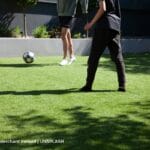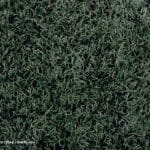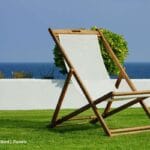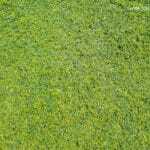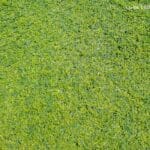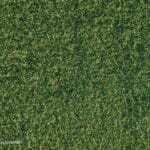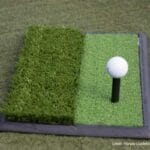For homeowners looking to enhance their outdoor spaces, synthetic grass has become an increasingly attractive option. Not only does it boast a lush appearance and year-round vibrancy to beautify your home and boost its curb appeal, artificial turf also eliminates the need for mowing, watering, and fertilizing (making it a desirable alternative to traditional lawns). While the upfront cost of installation may seem significant, consider it an investment to your home rather than a cost. Indeed, many homeowners find that synthetic grass is a long-term investment that brings convenience, beauty, and lasting value to their properties. Understanding the costs involved and the benefits of this material is key to helping you determine whether synthetic turf is is the right choice for beautifying your home and adding some character to your spaces.
Upfront Costs of Synthetic Grass
Like any other addition to your home and its spaces, installation of synthetic grass requires an initial financial commitment. The cost of that installation may vary depending on certain factors (such as the size of the area to be covered, the quality of the turf, and the complexity of the installation process). High-quality synthetic grass mimics the natural look and feel of real grass while offering greater durability and resilience to ensure your investment lasts.
Labor expenses contribute to the total cost, as professional installation of your new artificial turf ensures a flawless finish and proper ground preparation. This process often includes removing existing grass, leveling the soil, adding a compacted base, and securing the synthetic turf. While homeowners can opt for a do-it-yourself installation, professional services help achieve a polished and long-lasting result (ensuring your grass does its job of contributing to your home’s appeal).
Long-Term Financial Benefits
Although synthetic grass has a noticeable upfront initial cost, the long-term savings it offers make it an appealing investment. One of the most significant financial advantages to take note of is the elimination of routine lawn maintenance. As synthetic grass doesn’t grow and is less conducive to weed and pest growth, that minimizes the need for homeowners to purchase lawnmowers, trimmers, fertilizers, pesticides, or irrigation systems (resulting in considerable cost reductions over time for you).
Water conservation is another major benefit. Traditional lawns require regular watering to maintain their lush appearance, especially during warmer, drier periods. By switching to synthetic grass, homeowners reduce their water consumption significantly, leading to lower utility bills and a more environmentally responsible lifestyle.
Durability and Longevity
High-quality synthetic grass is designed to withstand years of use without showing significant signs of wear. Unlike natural grass(which can develop brown patches, become muddy, or require reseeding), artificial turf maintains its vibrant appearance throughout the seasons. It is also engineered to endure exposure to sunlight, rain, and varying temperatures, making it a practical choice for homeowners seeking a low-maintenance outdoor solution.
The lifespan of synthetic grass can depend on certain factors (such as usage and maintenance). However, with proper care, many installations can last well over a decade, making it a worthwhile investment for those looking to enhance their outdoor spaces without frequent upkeep or replacement costs.
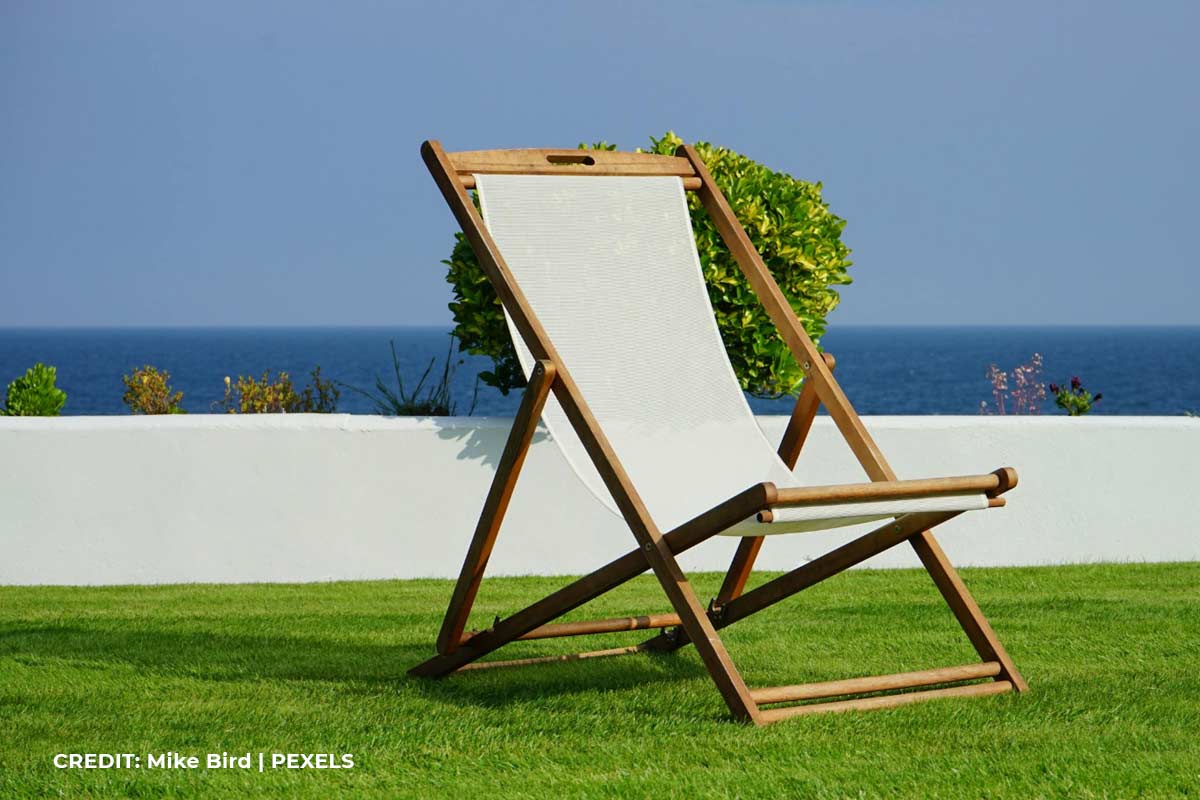
Aesthetic and Functional Appeal
One advantage synthetic grass has over natural grass is its ability to stay lush, green, and beautiful all year and for many years. Synthetic turf offers a consistently green and manicured look (contributing to the overall curb appeal of your home). Its this uniform texture and rich colour that create a welcoming environment that can remain so visually appealing year-round. Unlike natural lawns, artificial turf also does not develop uneven patches, weeds, or dry areas, ensuring a pristine appearance with minimal effort.
In addition to aesthetics, synthetic grass enhances the functionality of outdoor spaces. Families with children or pets in particular benefit from a soft and resilient surface that provides comfort and safety. The material is designed to be non-toxic and hypoallergenic, offering a clean environment for outdoor play and relaxation.
For homeowners who enjoy entertaining, synthetic grass also creates an ideal setting for backyard gatherings, barbecues, and leisure activities. It provides a stable and mud-free surface, allowing guests to enjoy the space without concerns about dirt or mess.
Year-Round Usability
One particularly noteworthy factor in synthetic grass’ appeal is its ability to remain in peak condition year-round. Natural grass lawns often struggle with seasonal changes, becoming dry and brittle in summer or muddy in wet conditions. Artificial turf (on the other hand) maintains its lushness and usability in spite of poor weather or the change of the seasons.
It’s this reliability that allows homeowners to use their outdoor spaces more frequently. Whether you desire an afternoon of relaxation, a family picnic, or an outdoor exercise session, synthetic grass provides a comfortable and inviting surface at all times. This consistency also serves to enhances the enjoyment of home exteriors without the worry of seasonal lawn challenges.
Environmental Considerations
Homeowners who value sustainability can easily appreciate the environmental benefits of synthetic grass. Synthetic grass offers an excellent way of conserving water, which can be a particularly vital element for homeowners in areas prone to water shortages). By eliminating the need for constant watering, artificial turf helps conserve that vital natural resource and keep your water bills low (your artificial turf can be great for the environment and keep your water costs low all at the same time). Additionally, it reduces the demand for chemical fertilizers, herbicides, and pesticides (which can all have harmful effects on local ecosystems if used improperly).
Another environmental advantage is the reduction of carbon emissions. Traditional lawn maintenance often involves gasoline-powered equipment (such as lawnmowers and trimmers), which contribute to air pollution. By switching to synthetic grass, homeowners can minimize their carbon footprint while still enjoying a beautiful lawn.
Minimal Maintenance Requirements
The maintenance demands of synthetic grass are significantly lower compared to natural lawns. While artificial turf does not require mowing or watering, occasional care does preserve its appearance and longevity. Regularly following simple maintenance steps for your grass (such as removing debris, brushing the fibers to maintain their upright position, and rinsing the surface to remove dust or pet waste) all contribute to keeping the lawn looking fresh and clean.
For pet owners, synthetic grass also offers the advantage of easy cleanup. Most artificial turf systems include efficient drainage layers that allow liquids to pass through quickly. As a side benefit, this convenience also makes synthetic grass a practical choice for households with pets. Meanwhile, any solid waste that ends up on the turf can be easily removed, and occasional rinsing prevents odours from developing.
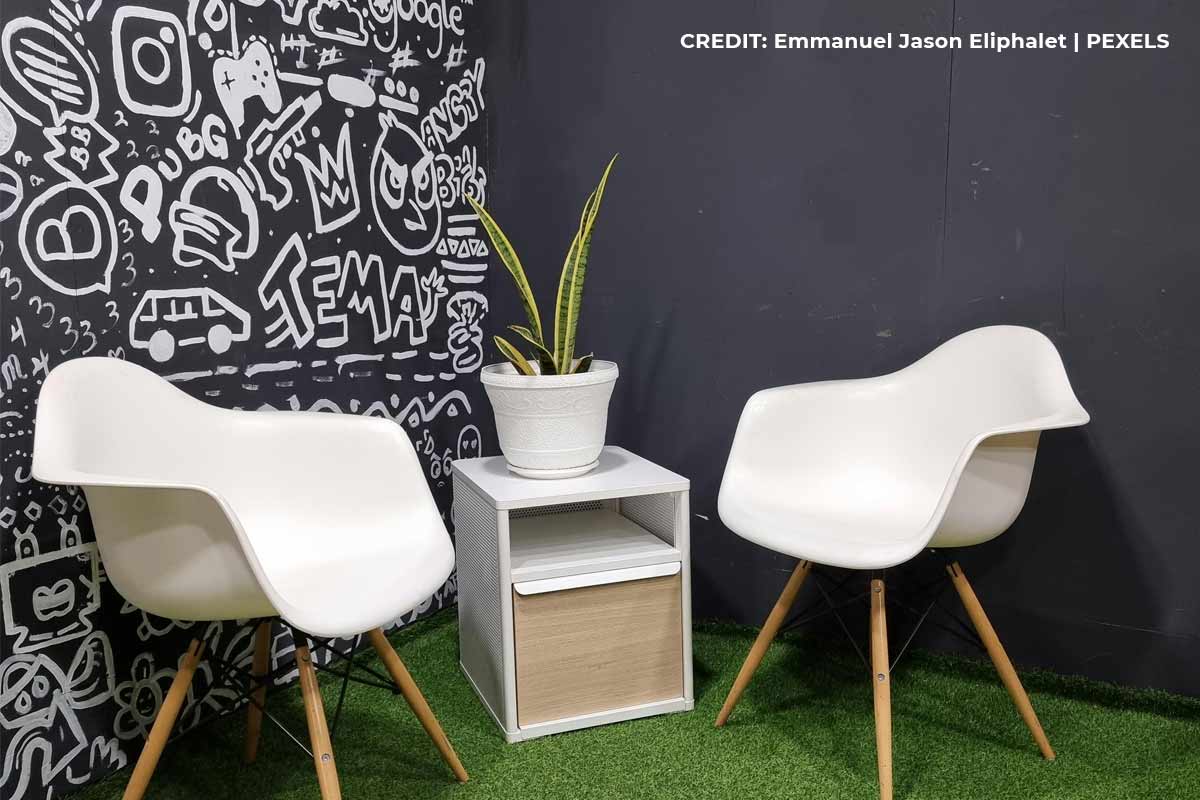
Customization and Design Possibilities
Synthetic grass is available in various styles, shades, and textures, allowing homeowners to customize their outdoor spaces according to personal preferences. Whether seeking a natural-looking lawn with varied blade lengths or a uniform, neatly trimmed surface, artificial turf provides diverse options to complement different home aesthetics.
Beyond traditional lawns, synthetic grass can be used for unique landscape features such as rooftop gardens, poolside areas, and decorative pathways. Balconies are a particularly favoured area, as there are a variety of artificial grass options to add some colour to those spots. This versatility enables homeowners to create distinctive and functional outdoor environments tailored to their lifestyles.
Increased Property Value
As a rule of thumb, any element that adds to the beauty and style of your home (be it a well-manicured lawn, interesting design elements in your rooms, or functional spaces you can use for a variety of purposes) only enhances your property. A well-maintained and visually appealing landscape is one such element that adds to your property’s curb appeal. Synthetic grass contributes to a polished exterior that can attract potential buyers should homeowners decide to sell their homes in the future. The appeal of a low-maintenance lawn with year-round greenery can be a particularly desirable feature for prospective homeowners who value convenience and aesthetics.
Additionally, the durability and longevity of artificial turf add to its value proposition. Since synthetic grass remains in excellent condition for years, it reduces the need for landscaping updates, making it an attractive feature for would-be buyers on the real estate market.
Is Synthetic Grass a Worthwhile Investment?
The decision to invest in synthetic grass ultimately depends on individual preferences, lifestyle needs, and long-term goals. For homeowners who prioritize a pristine lawn without the ongoing demands of maintenance, artificial turf presents an excellent solution. Any initial installation cost can then be balanced by long-term financial savings, aesthetic benefits, environmental advantages, and year-round usability.
With its durability, minimal upkeep, and ability to enhance outdoor spaces, synthetic grass offers a practical and visually pleasing alternative to natural grass. Any homeowners seeking a lush, evergreen lawn that requires little effort will find synthetic grass to be a worthwhile investment that brings lasting beauty and functionality to their properties.
When it comes to finding reliable, high-quality synthetic turf to beautify your home spaces, Lazy Lawn is here to help. We provide a wide range of artificial grass options to meet your needs. Give us a call now at (888) 622-5296 and take a look around to find the synthetic grass that’s just right for you.








